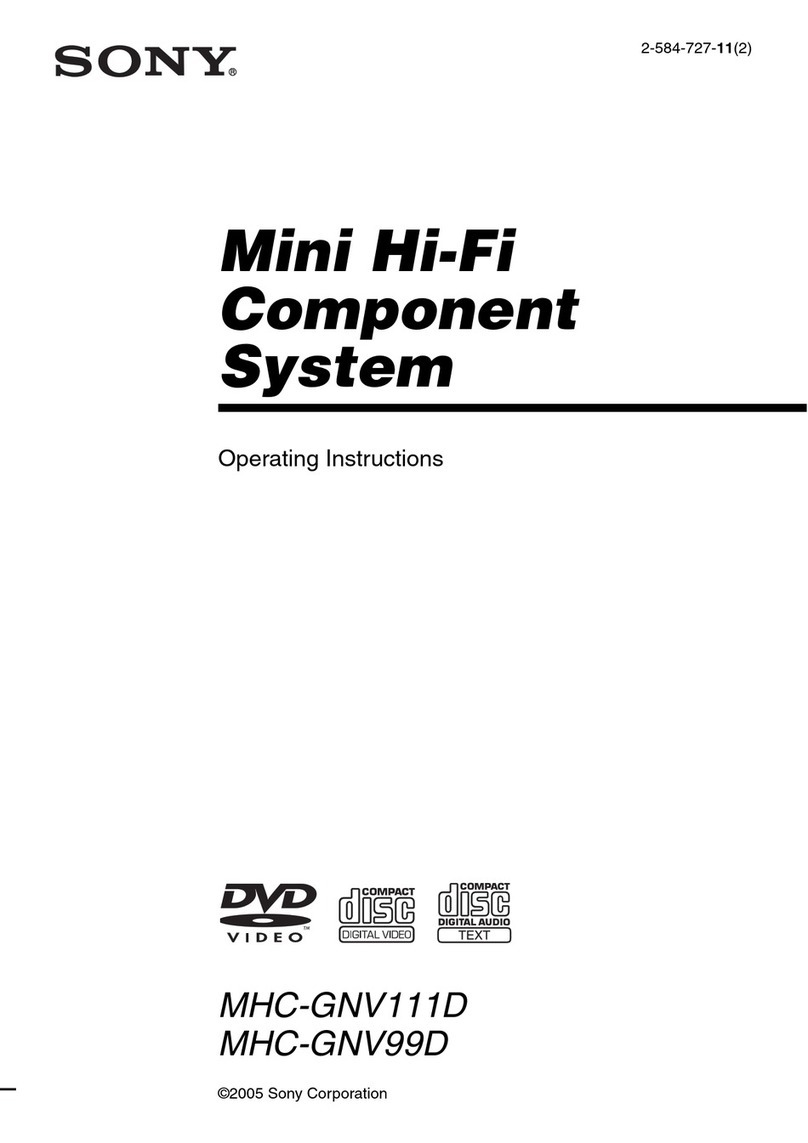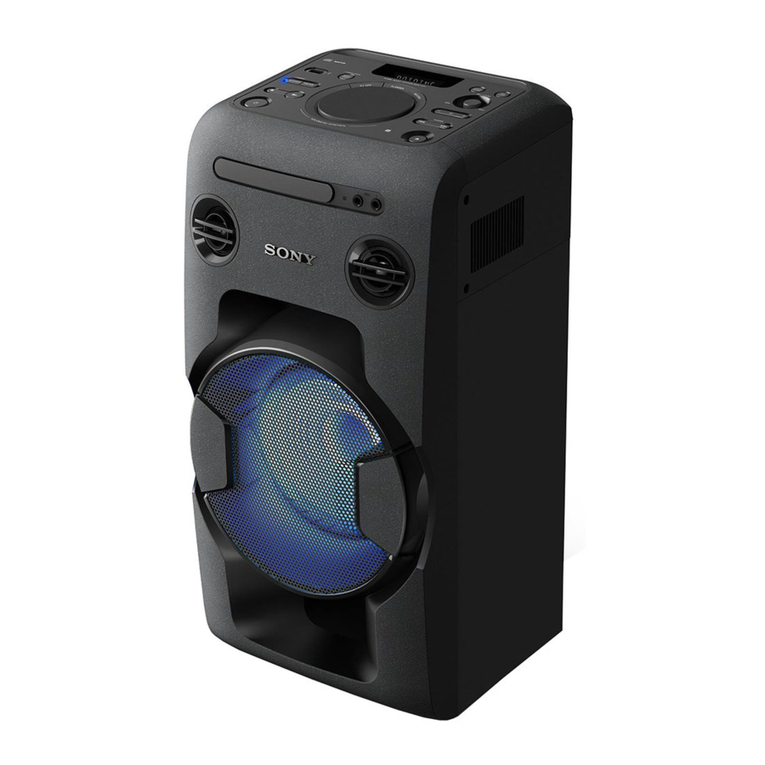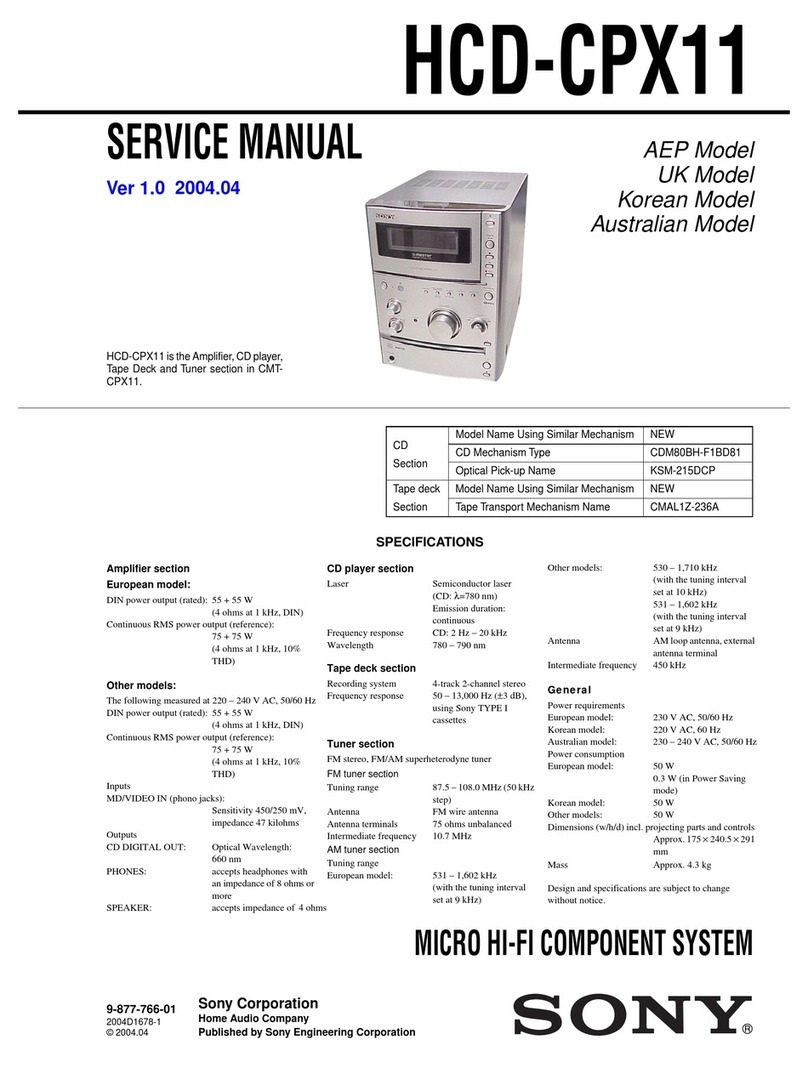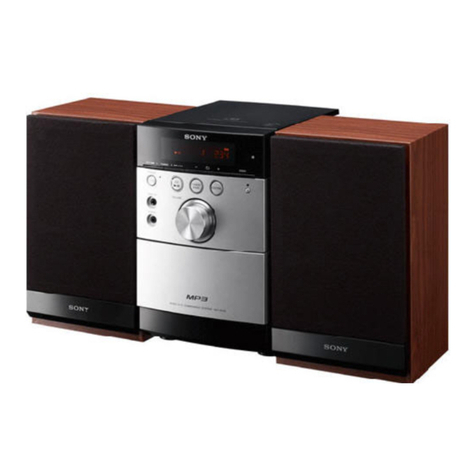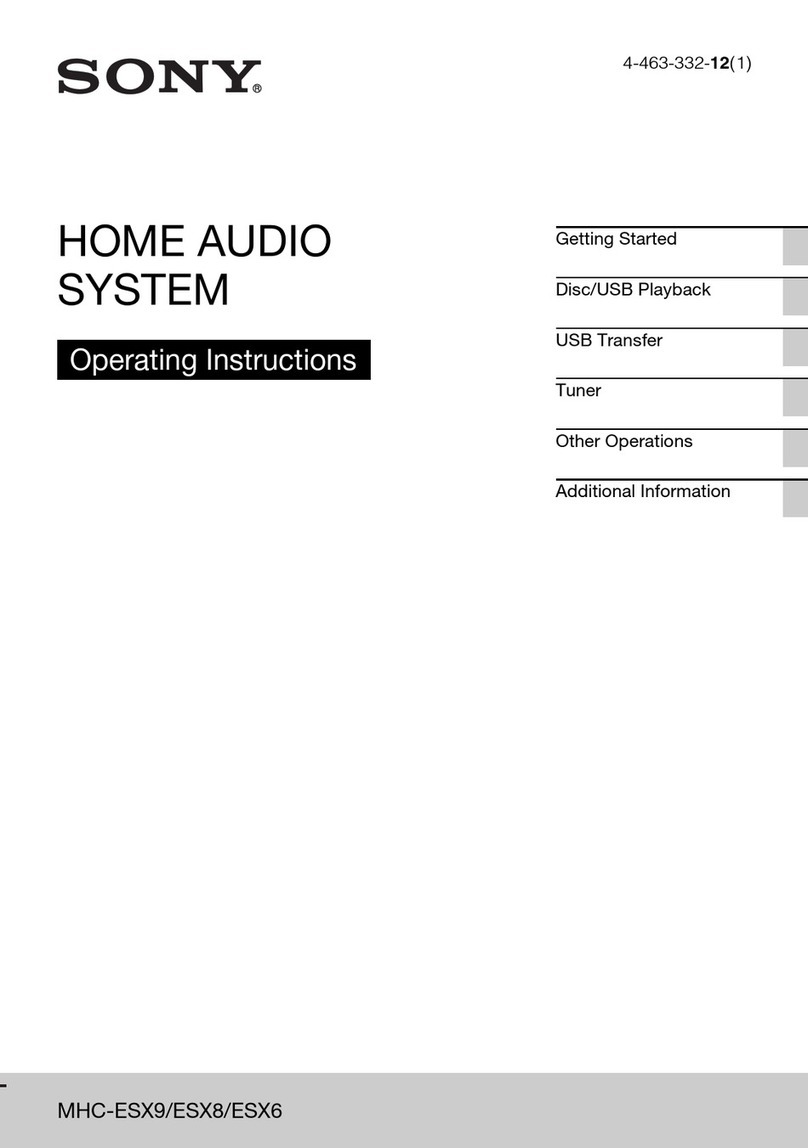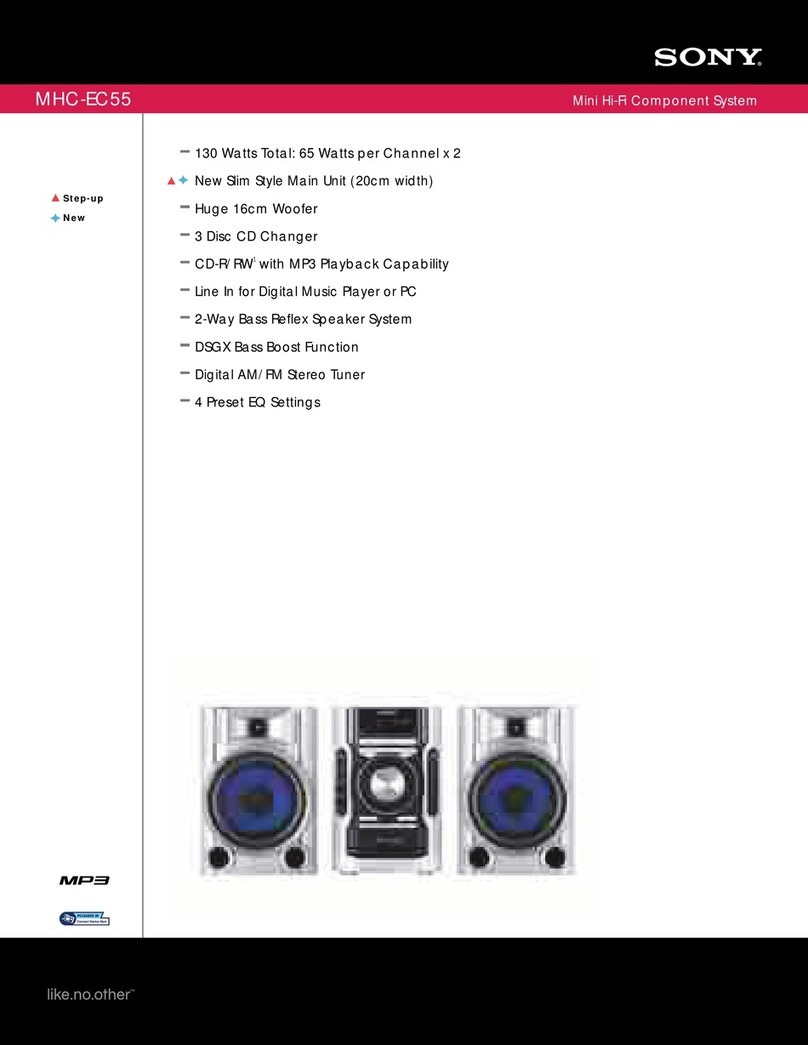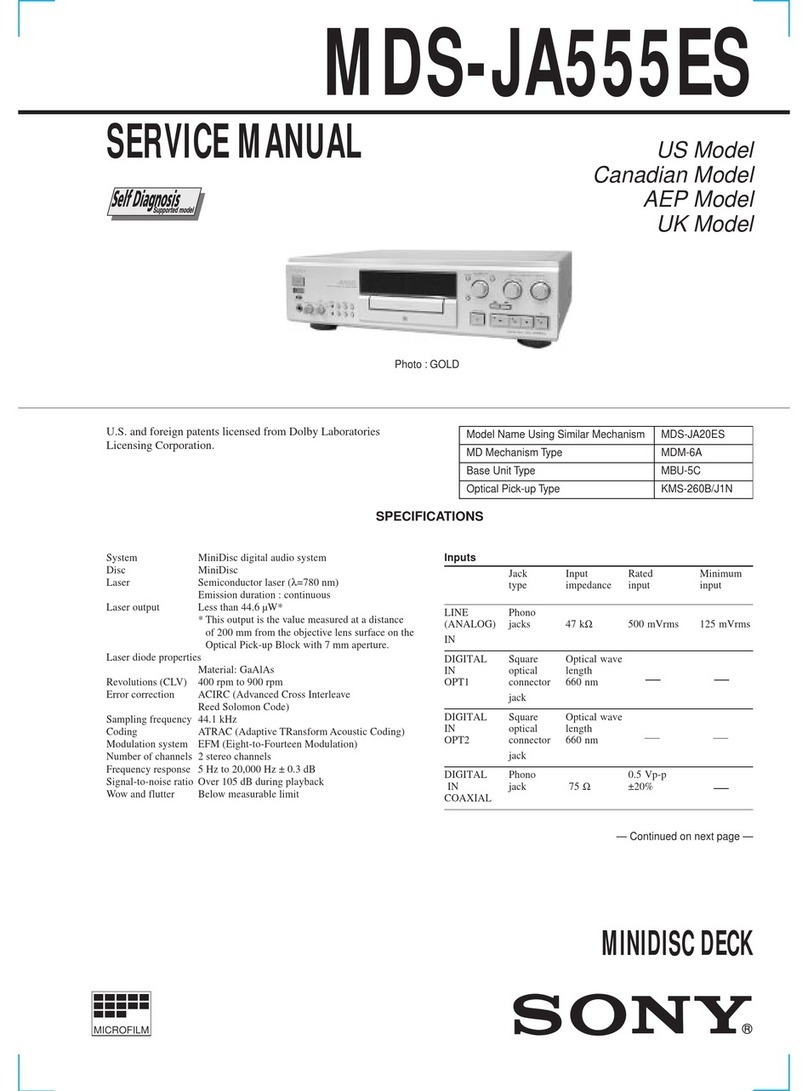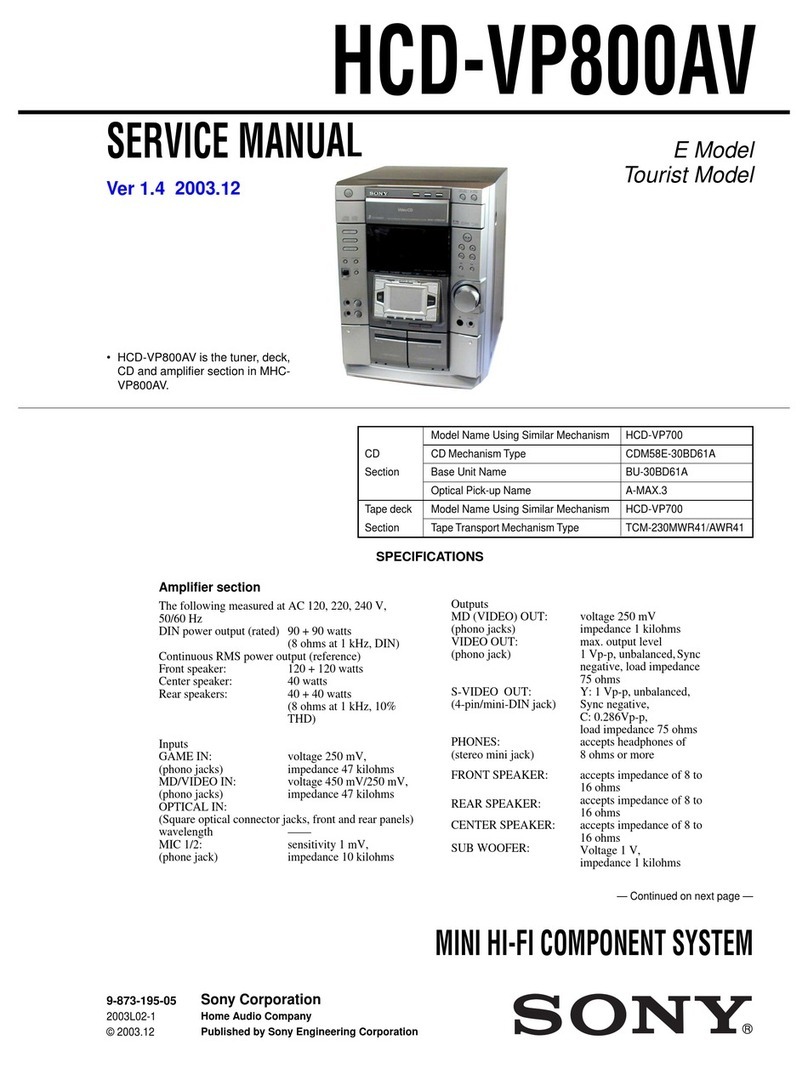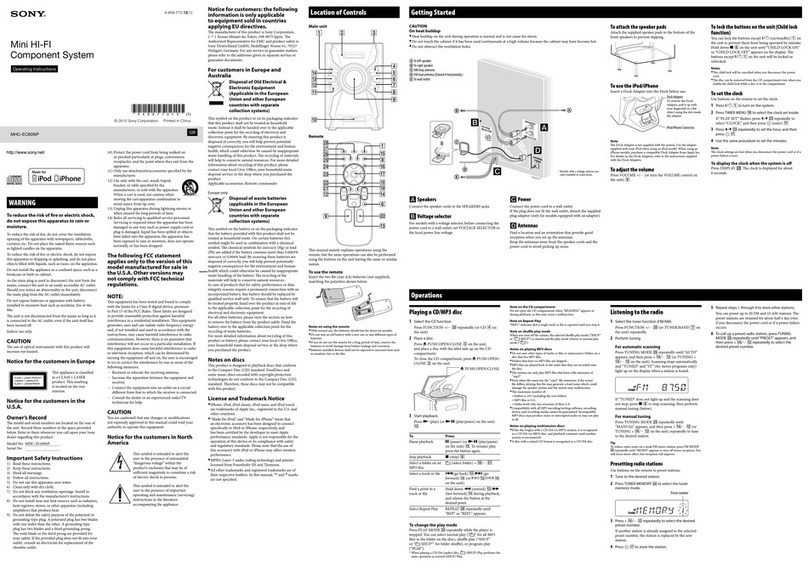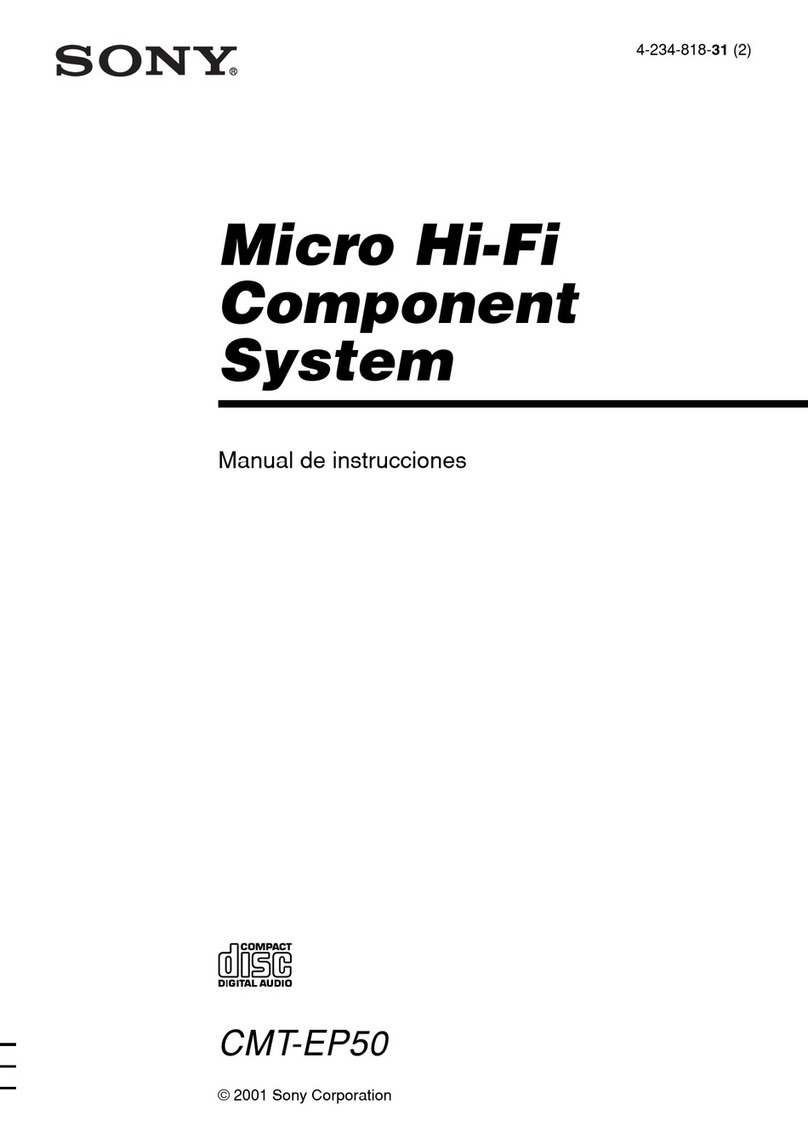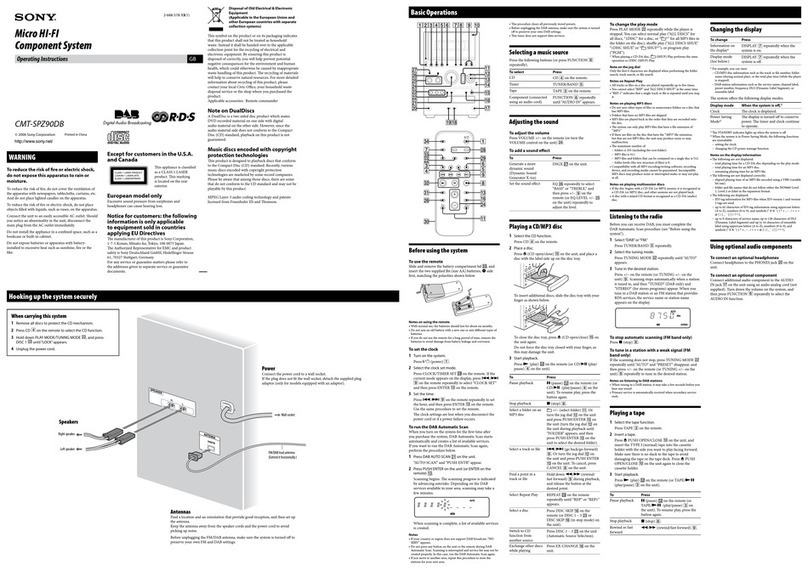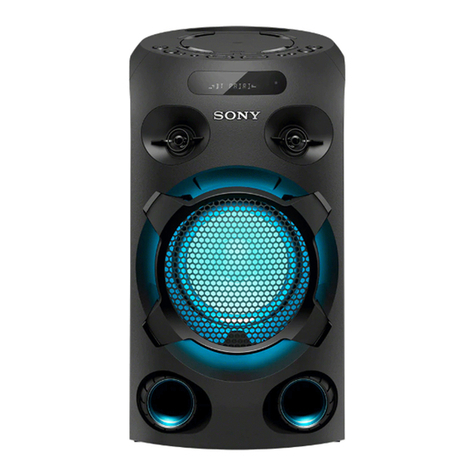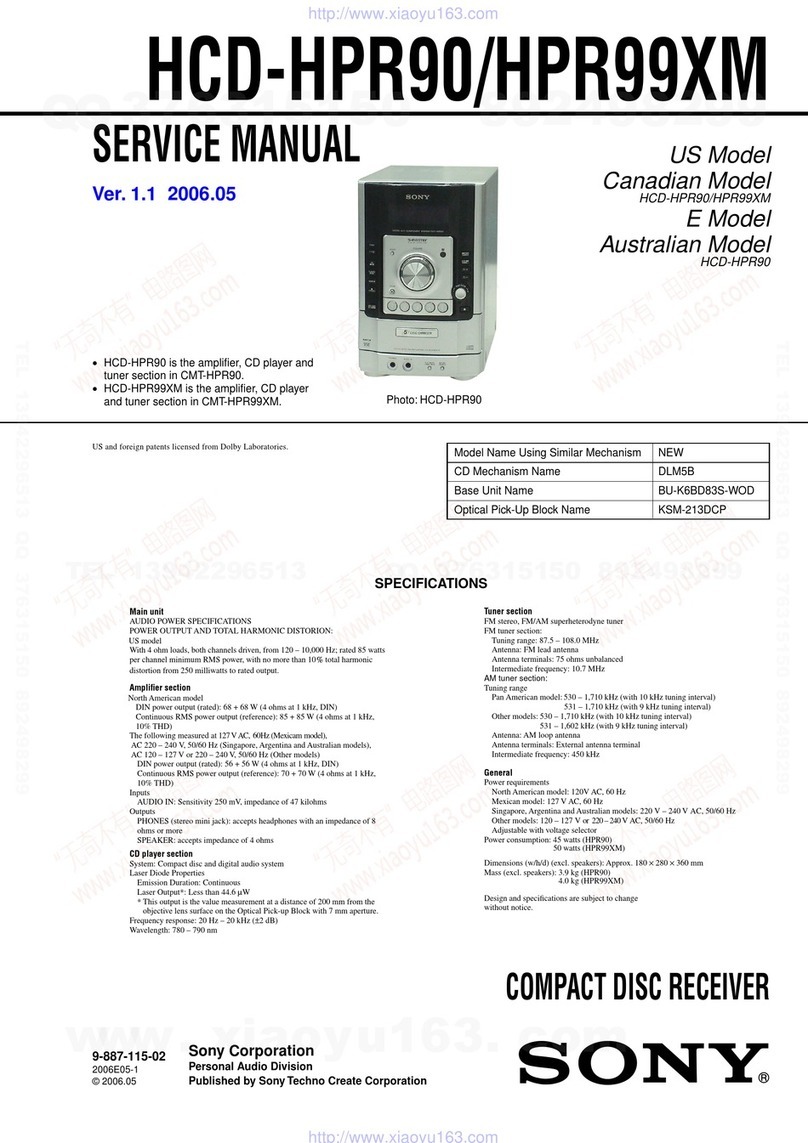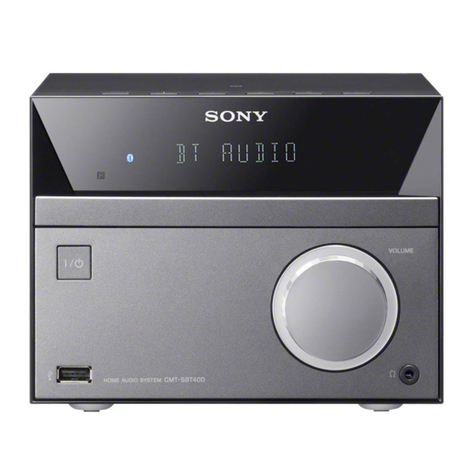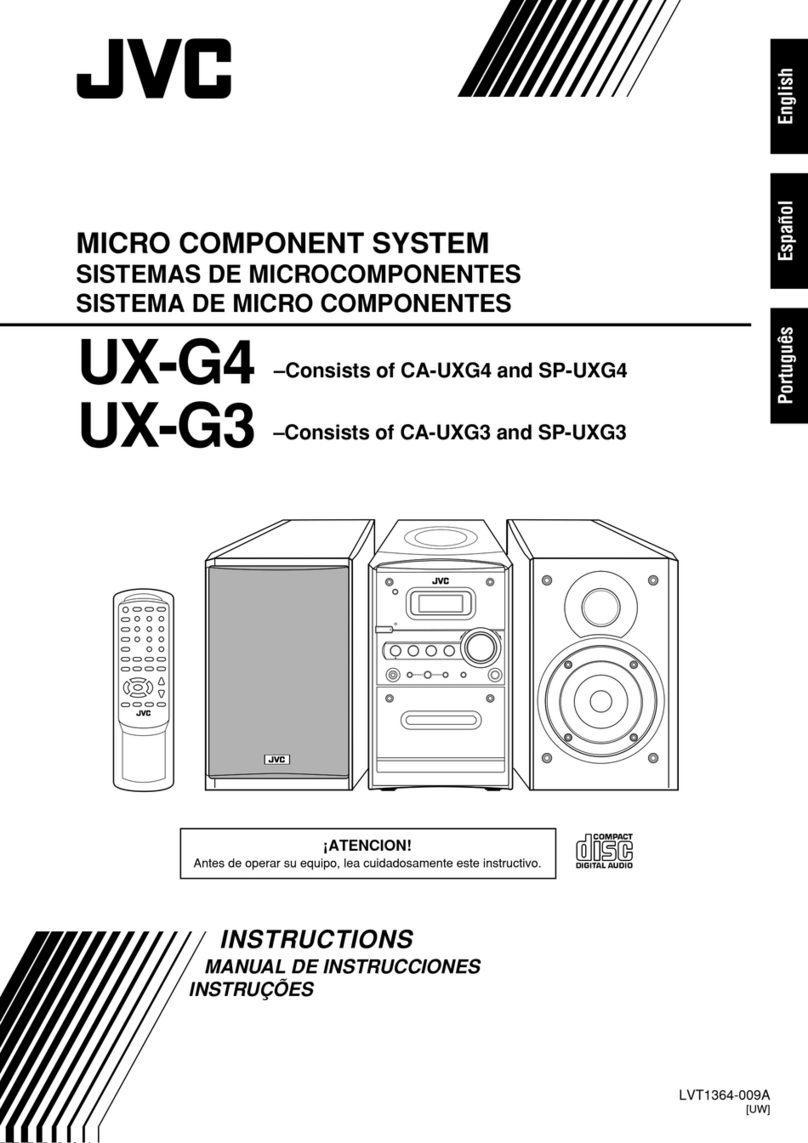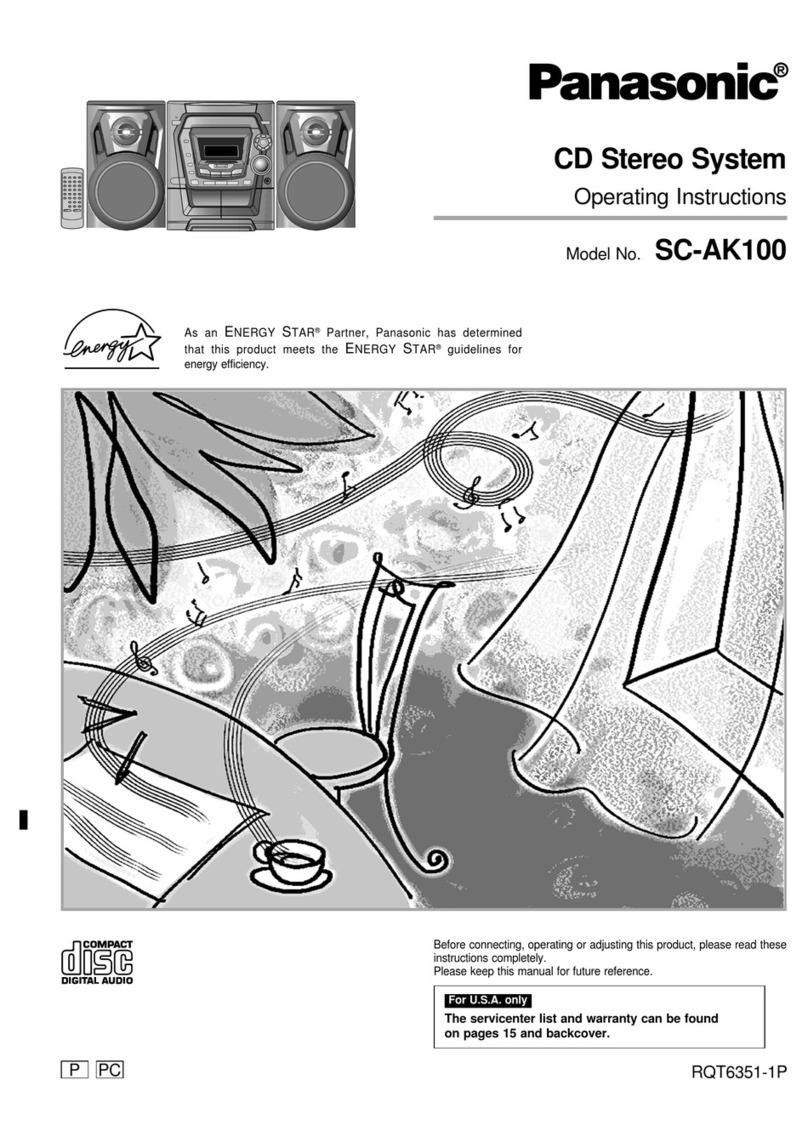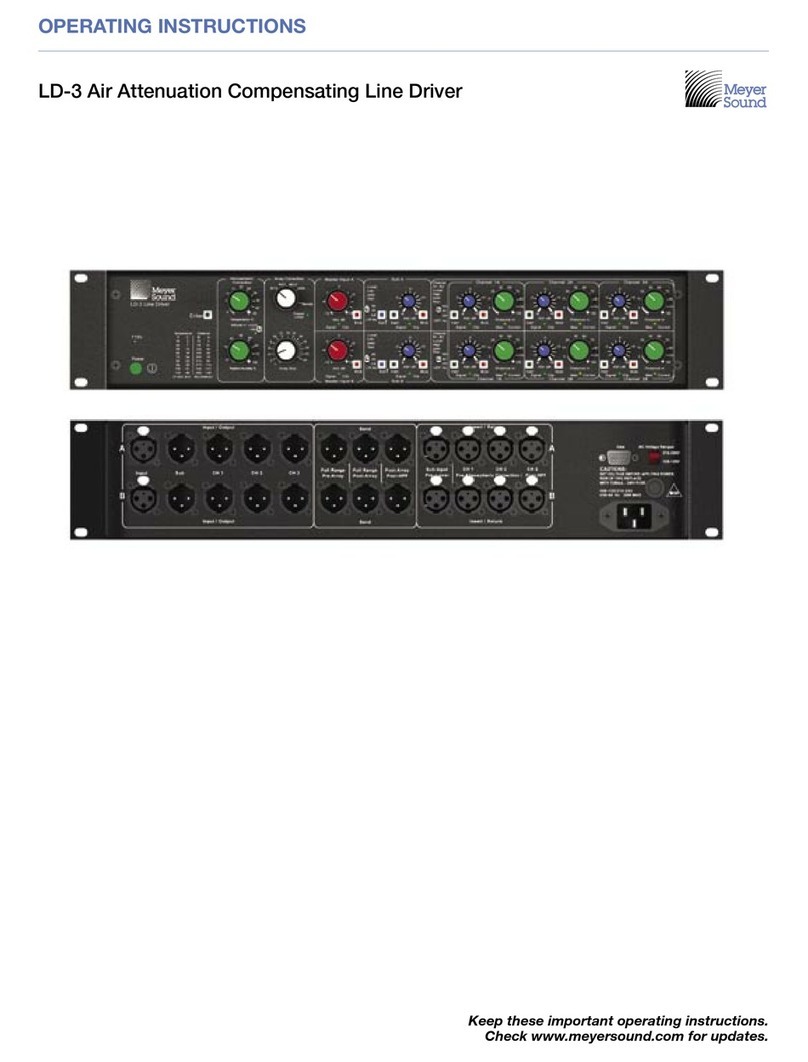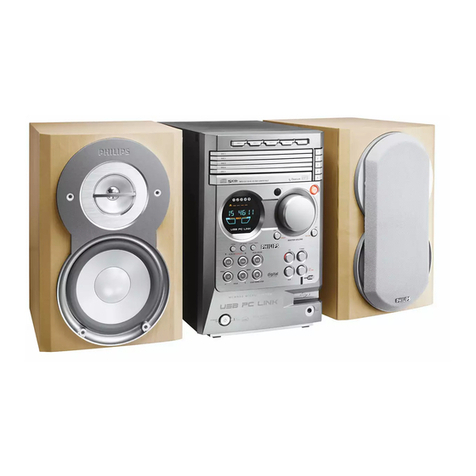
3
HCD-CPX22/NXM3
TABLE OF CONTENTS
1. SERVICING NOTES ................................................ 4
2. GENERAL
Location of Controls........................................................ 5
3. DISASSEMBLY
3-1. Disassembly Flow ........................................................... 7
3-2. Case ................................................................................. 8
3-3. Main Board, Front Panel Section .................................... 8
3-4. Tape Mechanism Deck .................................................... 9
3-5. Panel Board ..................................................................... 9
3-6. Back Panel ....................................................................... 10
3-7. CD Mechanism Deck (CDM81B-F1BD81A) ................. 10
3-8. S-Master Board................................................................ 11
3-9. Tray.................................................................................. 11
3-10. M761 (LD/ST Motor), M762 (BU U/D Motor) .............. 12
3-11. Base Unit (BU-F1BD81A) .............................................. 12
3-12. BD Board......................................................................... 13
4. TEST MODE.............................................................. 14
5. MECHANICAL ADJUSTMENTS ....................... 17
6. ELECTRICAL ADJUSTMENTS
Deck section .................................................................... 17
CD Section ...................................................................... 18
7. DIAGRAMS
7-1. Circuit Board Location .................................................... 21
7-2. Block Diagram – CD Servo Section –............................ 22
7-3. Block Diagram – Tuner/Tape Deck Section – ................ 23
7-4. Block Diagram – Main Section – ................................... 24
7-5. Block Diagram – S-Master Section – ............................. 25
7-6. Printed Wiring Board – BD Board – .............................. 26
7-7. Schematic Diagram – BD Board – ................................. 27
7-8. Printed Wiring Board – CD Mechanism Board –........... 28
7-9. Schematic Diagram – CD Mechanism Board – ............. 29
7-10. Printed Wiring Boards – Main Board – .......................... 30
7-11. Schematic Diagram – Main Board (1/3) – ..................... 31
7-12. Schematic Diagram – Main Board (2/3) – ..................... 32
7-13. Schematic Diagram – Main Board (3/3) – ..................... 33
7-14. Printed Wiring Boards – Panel Board – ......................... 34
7-15. Schematic Diagram – Panel Board –............................... 35
7-16. Printed Wiring Board – Disc SW, Vol, HP Board – ....... 36
7-17. Schematic Diagram – Disc SW, Vol, HP Board – .......... 37
7-18. Printed Wiring Board – S-Master Board – ..................... 38
7-19. Schematic Diagram – S-Master Board – ........................ 39
7-20. IC Block Diagram ........................................................... 40
7-21. IC Pin Function Description............................................ 41
8. EXPLODED VIEWS
8-1. Main Section.................................................................... 47
8-2. Front Panel Section ......................................................... 48
8-3. Chassis Section................................................................ 49
8-4. CD Mechanism Deck Section-1
(CDM81B-F1BD81A) .................................................... 50
8-5. CD Mechanism Deck Section-2
(CDM81B-F1BD81A) .................................................... 51
8-6. CD Mechanism Deck Section-3
(CDM81B-F1BD81A) .................................................... 52
9. ELECTRICAL PARTS LIST................................ 53
Notes on chip component replacement
•Never reuse a disconnected chip component.
•Notice that the minus side of a tantalum capacitor may be
damaged by heat.
Flexible Circuit Board Repairing
•Keep the temperature of soldering iron around 270˚C
during repairing.
•Do not touch the soldering iron on the same conductor of the
circuit board (within 3 times).
•Be careful not to apply force on the conductor when soldering
or unsoldering.
CAUTION
Use of controls or adjustments or performance of procedures
other than those specified herein may result in hazardous
radiation exposure.
This appliance is classified as
a CLASS 1 LASER product.
This label is located on the rear
exterior.
SAFETY-RELATED COMPONENT WARNING!!
COMPONENTS IDENTIFIED BY MARK 0OR DOTTED LINEWITH
MARK 0ON THE SCHEMATIC DIAGRAMS AND IN THE PARTS
LIST ARE CRITICAL TO SAFE OPERATION. REPLACE THESE
COMPONENTS WITH SONY PARTS WHOSE PART NUMBERS
APPEAR AS SHOWN IN THIS MANUAL OR IN SUPPLEMENTS
PUBLISHED BY SONY.



